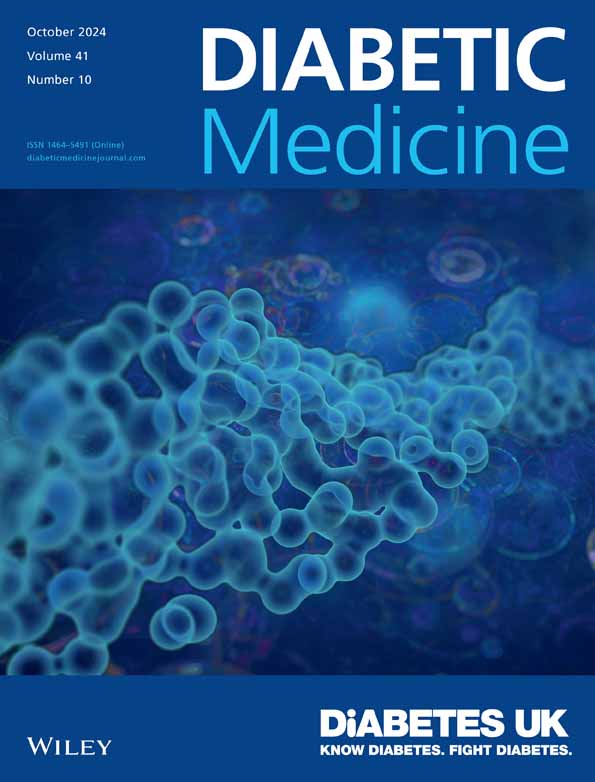Effectiveness of diabetes footwear fit assessment by people with diabetes and their family or partners: A reliability study
Abstract
Aims
Incorrectly fitting footwear is implicated in ulceration yet worn by more than two-thirds of people with diabetes. Our aim is to evaluate the accuracy, reliability and ease of use of a new intervention to train people with diabetes and their ‘footwear buddies’ (e.g., partner/family member) to assess footwear for adequate length and width. Participants were provided with foot and footwear measuring tools, written instructions, video and face-to-face training.
Methods
20 participants were recruited consisting of 10 people with diabetes aged 18+ and their 10 ‘footwear buddies’. Participants measured feet and footwear length repeatedly and completed ease-of-use Visual Analogue Score surveys after reading/viewing educational materials.
Results
Mean absolute difference (MAD) between study participants' and researchers' foot length and width measurements was 3–5 mm after only an average 6.5 ± 1.6 min of training. Repeated measurement Intraclass Correlation Coefficient (ICC) ranged from moderate to excellent (0.71–1.00) with excellent ease of use (7.8/10).
MAD between participants' and researchers' footwear length measurements was 5 mm with excellent ICC (0.99–1.00) and ease of use scores (7.8/10). However, footwear width MAD was much larger (9-11 mm, 0.96 ICC), with poor ease of use.
Conclusions
Diabetes footwear assessment shows potential—individuals at risk of foot ulceration and their footwear buddies can be empowered to assess their feet and footwear for length even after just 20 min' training. However, footwear width measurement remains challenging, requiring either a different methodology or tool for people with diabetes to accurately and confidently assess their footwear fit.
Trial registration: ClinicalTrials.gov NCT06200532


 求助内容:
求助内容: 应助结果提醒方式:
应助结果提醒方式:


